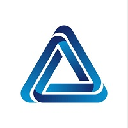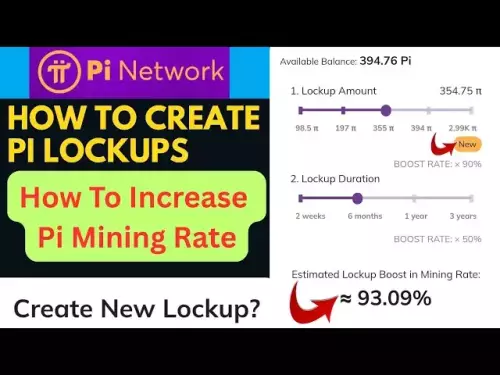 |
|
 |
|
 |
|
 |
|
 |
|
 |
|
 |
|
 |
|
 |
|
 |
|
 |
|
 |
|
 |
|
 |
|
 |
|
Cryptocurrency News Articles
Bitcoin Solaris Proposes a Breakthrough in Consensus Design Using Merkle-DAGs
May 14, 2025 at 08:40 pm
Bitcoin Solaris introduced a breakthrough in consensus design by using repeated sub-sampled voting to reach probabilistic consensus.

Avalanche(s AVAX) has revolutionized blockchain technology with its groundbreaking contribution to consensus design. Its groundbreaking approach, which combines sub-sampled voting with a DAG (Directed Acyclic Graph) architecture, has unlocked new levels of throughput for blockchains.
However, while Avalanche’s innovation in achieving consensus with high throughput is undeniable, its model does come with trade-offs, especially in terms of fault tolerance, which becomes critical in adversarial conditions or periods of high validator churn.
Bitcoin Solaris, a novel blockchain protocol currently in the final stages of its presale, addresses these limitations with a fundamentally different approach that leverages a Merkle-DAG structure to maintain complete order and optimal Byzantine Fault Tolerance (BFT) throughout its entire validator network.
Instead of relying on repeated messages or randomized polling like Avalanche’s DAG, Bitcoin Solaris uses cryptographic linkages across state changes to enforce consistency, determinism, and conflict resolution without requiring any global coordination. This property is key to increasing throughput and finality speed, and it also improves resilience against long-range attacks and inconsistent state propagation—critical weaknesses of Avalanche’s design when applied to permissionless environments.
Merkle-DAG Integration Across the Dual-Layer Architecture
The innovation lies in how the Merkle-DAG is implemented across Bitcoin Solaris’s dual-layer blockchain, where each layer maintains autonomy while contributing to network-wide consensus:
Unlike Avalanche’s DAG-based consensus, where conflicting transactions may require multiple rounds of probabilistic resolution, Bitcoin Solaris’s Merkle-DAG model defines absolute order. This ensures state determinism even during validator faults or latency spikes—eliminating ambiguity and reorg risks.
Enhanced Byzantine Fault Tolerance Through Structural Verification
Avalanche’s consensus reaches finality when enough nodes probabilistically agree that a transaction is accepted. However, this model becomes vulnerable when validator identities change frequently or malicious participants intentionally delay propagation. Bitcoin Solaris resolves this by embedding Merkle-root checkpoints directly into block headers, providing cryptographic proof of network-wide state without repeated polling.
This structure supports stronger BFT by making it computationally infeasible for a faulty subset of validators to rewrite history or produce inconsistent forks. Validators reach consensus by verifying Merkle proofs and synchronized time stamps, not by polling neighbors repeatedly—a model that lowers latency and increases resistance to asynchronous faults.
This architecture maintains fault tolerance even when up to one-third of nodes behave maliciously while reducing coordination load and improving validator independence—two areas where Avalanche’s design introduces complexity.
Crypto Royal breaks down how Bitcoin Solaris’s Merkle-DAG architecture improves upon Avalanche’s probabilistic model in a detailed comparison. The video highlights fault tolerance thresholds, validator independence, and the system’s ability to maintain consensus under pressure.
Presale Phase 3: Structured Entry Ahead of Infrastructure Expansion
Bitcoin Solaris is currently in Presale Phase 3, with BTC-S tokens priced at $3 USDT. This phase offers access ahead of Merkle-DAG protocol activation across the full validator network before centralized exchange listings.
The BTC-S supply is fixed at 21 million tokens, with 4.2 million (20%) allocated for presale across all phases. There is no inflation, and token emissions are tied directly to protocol-defined mining and validator participation. This structure rewards early participants before infrastructure scaling increases demand and network complexity.
Third-Party Audits Reinforce Merkle-DAG Security
Bitcoin Solaris has undergone full protocol audits to validate its unique structural approach:
These audits validate that the Merkle-DAG implementation not only meets performance targets but also enforces Byzantine resilience and verifiable state propagation under real-world conditions.
Avalanche’s DAG model showed that blockchain consensus could scale — but Bitcoin Solaris proves it can scale deterministically and securely. By embedding the Merkle-DAG structure across a layered validator system, it solves key limitations in BFT enforcement and state finality. As Phase 3 of the presale continues and Merkle-DAG logic expands across the protocol, Bitcoin Solaris is setting a new standard in consensus precision, resilience, and architectural clarity.
Website: https://bitcoinsolaris.com/
X: https://x.com/BitcoinSolaris
Telegram: https://t.me/Bitcoinsolaris
Disclaimer: This is a sponsored article, and views in it do not represent those of, nor should they be attributed to, ZyCrypto. Readers should conduct independent research before taking any actions related to the company, product, or project mentioned in this piece; nor can this article be regarded as investment advice. Please be aware that trading cryptocurrencies involves substantial risk as the volatility of the crypto market can lead to significant losses.
Disclaimer:info@kdj.com
The information provided is not trading advice. kdj.com does not assume any responsibility for any investments made based on the information provided in this article. Cryptocurrencies are highly volatile and it is highly recommended that you invest with caution after thorough research!
If you believe that the content used on this website infringes your copyright, please contact us immediately (info@kdj.com) and we will delete it promptly.





























































